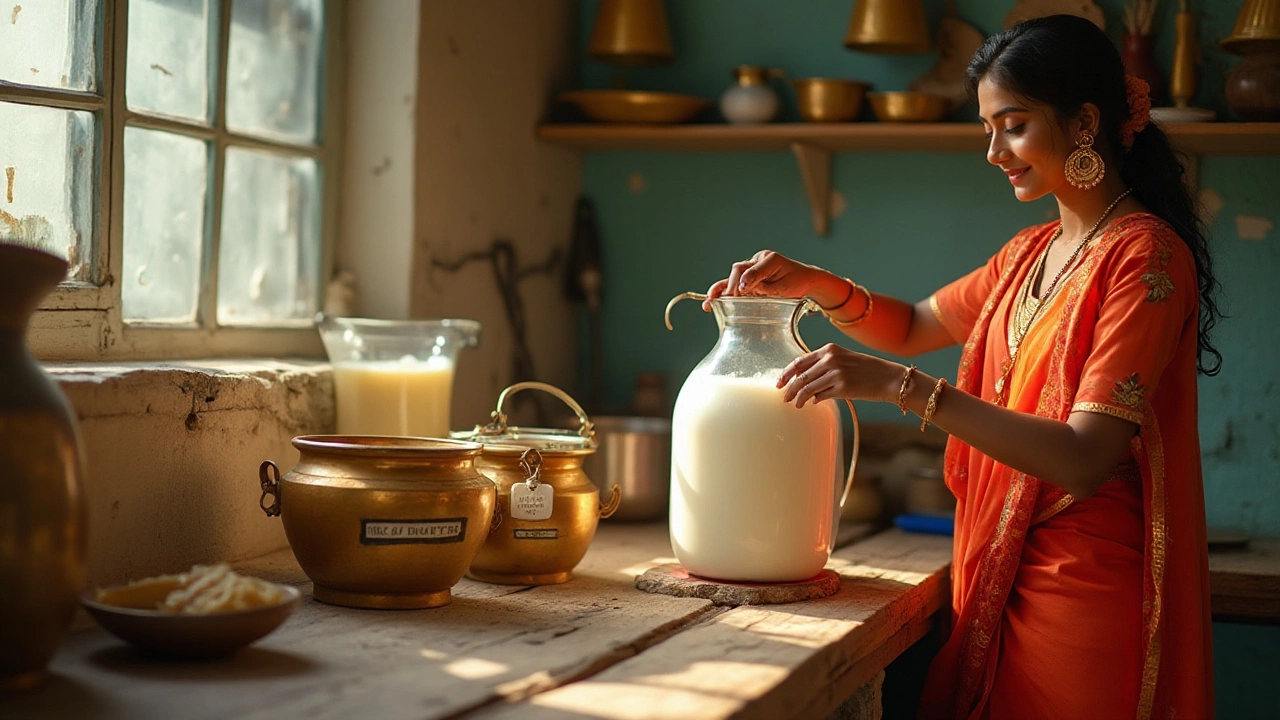Best Milk for Paneer: How to Pick the Right Milk for Perfect Homemade Paneer
Making paneer at home is easier than you think, but the milk you start with makes a huge difference. If you use low‑fat or watered‑down milk, the curds turn crumbly and bland. The right milk gives you soft, milky paneer that holds together for curries, tikkas, or salads.
Full‑Cream (Whole) Milk: The Gold Standard
Whole milk, usually 3.5% fat, is the go‑to choice for most home cooks. The fat coats the protein strands, so when you add the acid (lemon juice or vinegar) the curds stay moist and rich. Look for fresh, pasteurized milk without additives. If you can find milk straight from the dairy or a local farm, even better – it often has a slightly higher butterfat content, which makes the paneer creamier.
Skim or Low‑Fat Milk: When Budget or Diet Matters
Skim milk works if you’re watching calories, but expect a firmer texture. The lower fat means the curds will be drier and may need a gentle hand when squeezing out whey. To rescue the texture, add a tablespoon of cream or a splash of full‑cream milk after the curds have formed. This trick restores some richness without adding too many extra calories.
Raw milk is another option for paneer purists. Because it hasn’t been pasteurized, it contains natural enzymes that help curdling. However, raw milk can be harder to find and may carry safety concerns if not sourced from a trusted farm. If you decide to try it, bring the milk to a gentle boil, then cool to around 85°C before adding the acid.
Temperature is just as important as the type of milk. Heat the milk to a rolling boil, then let it cool to 80‑85°C (still steaming) before you add the acid. Too hot, and the proteins denature too quickly; too cool, and the curd won’t form properly. Stir gently and watch the milk separate into white curds and clear whey.
After the curds appear, let them rest for a minute, then strain through a cheesecloth. Gather the corners and press lightly to remove excess whey. For firmer paneer, hang the cloth for 30 minutes or place a weight on top for an hour. For softer paneer, just a quick squeeze is enough.
In short, whole milk gives you the best flavor and texture, skim milk works with a few tweaks, and raw milk adds a rustic touch if you’re comfortable handling it. Choose the milk that fits your taste, budget, and health goals, follow the temperature tips, and you’ll have fresh paneer ready to melt into any dish.
Choosing the Best Milk for Homemade Paneer: A Comprehensive Guide
Making paneer at home can be a rewarding experience, but choosing the right milk is crucial for the perfect texture and flavor. While milk options like cow, buffalo, and plant-based alternatives offer different results, each has its own distinct qualities that impact the paneer making process. Purity, fat content, and freshness are key factors to consider when selecting milk for your paneer. This article explores the various types of milk available, offering tips and insights to help you create the best homemade paneer.
